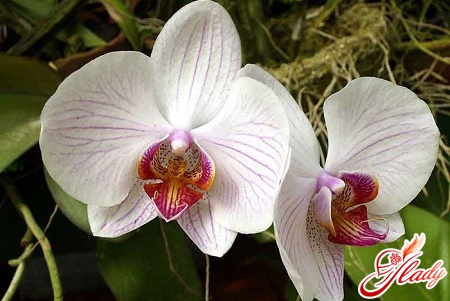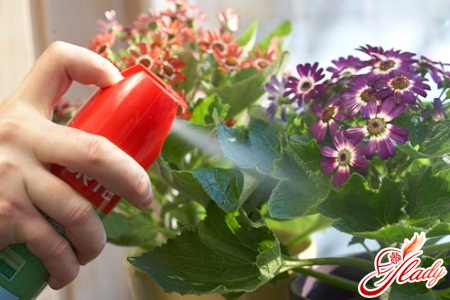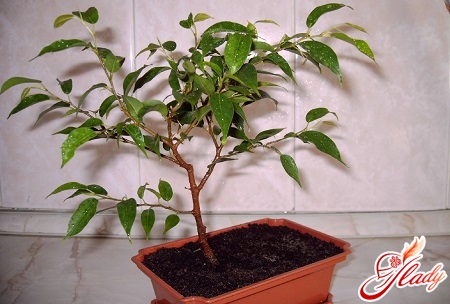 A beautiful tree with evergreen leaves, whichit's hard not to notice - the ficus of Benjamin. Fans of indoor plants know that he is able to decorate any room, but in order for the tree to remain beautiful, it is necessary to observe the conditions of care. Someone can say that they are quite complex and this flower is a capricious character, but now we will tell you how to take care of Benjamin's ficus, and you will see that actually caring for him at home is not so complicated.
A beautiful tree with evergreen leaves, whichit's hard not to notice - the ficus of Benjamin. Fans of indoor plants know that he is able to decorate any room, but in order for the tree to remain beautiful, it is necessary to observe the conditions of care. Someone can say that they are quite complex and this flower is a capricious character, but now we will tell you how to take care of Benjamin's ficus, and you will see that actually caring for him at home is not so complicated.
Choose a place for ficus
Considering that any indoor plants are notlike permutations, it is advisable to choose a place before the flower appears at home. So you will facilitate the care of the plant. Wherever the Benjamin ficus will be located, it should not be too dark or light, or cold. Of course, like all indoor plants, Benjamin Ficus does not like drafts. The temperature should not fall below 15 degrees, and it is desirable that the room is well ventilated. Direct sunlight can lead to the death of the ficus, but with the lighting should be quite bright, especially if your specimen has a mottled coloring of the leaves. Maintenance also includes monitoring of air humidity: it should not be below 50%, and the optimum figure is 70%. If the air is too dry, spray the leaves from the spray gun and at least once a month bathe the whole of Benjamin Ficus (if its size permits) under the shower. After bathing, allow the plant to dry completely, otherwise it may freeze. 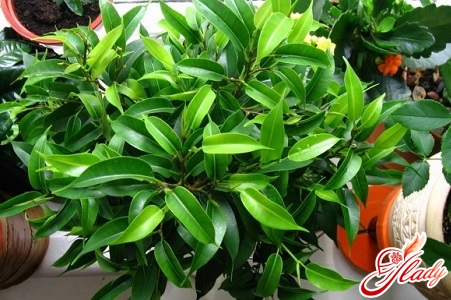
Watering and feeding of the ficus of Benjamin
It is difficult to imagine a proper care without a scheduleglaze. But watering house plants is without it, because different times of the year imply a different irrigation interval. Ficus Benjamin should be watered only when the earthen has already dried out sufficiently after the previous watering, but do not allow excessive drought. Check the soil - if it has dried out by about 1/5 of the pot, you can safely proceed with the water procedures. Given the size that Benjamin Ficus reaches, watering is best done in several stages, so that the earthen lump is well saturated with moisture. Water, which remains in the pan after watering, must be drained (about 30 minutes after watering: this time is enough for the earth to absorb all the necessary moisture). It is worth noting that the right care without fertilizer is unlikely to work. As a top dressing for the plant, ready-made mixtures can be used. Dosage should be calculated based on the instructions. Usually, Benjamin Ficus begins to fertilize the ficus in early spring and continues during the summer (once every two weeks). In the dormant period, do not overload the soil with fertilizers. This can only contribute to the development of various fungi, which later serve as sources of numerous diseases. You can use top dressing for the leaves, but be sure to stick to the dosage, otherwise the Benjamin Ficus will easily discard the foliage.
Plant transplantation
How to understand that a plant needs a transplant? If you find that the intervals between the watering of the ficus are getting shorter, and the drainage holes are beginning to look out, then the time has come. Usually young houseplants are transplanted every year, choosing a pot 2 cm larger than the previous one. After reaching the age of 5, Benjamin Ficus is transplanted every two years. A ficus-long-livers of impressive size can not be transplanted completely, but only partially replace the soil. The transplant is made, basically, at a time when the plant is experiencing an active period. Spring and summer, in principle, are ideal for moving the ficus. Two days before the transplant, the plant should be well watered. For the transplant, remove the plant from the pot and gently shake the whole earth off the roots. In the pot, where the plant will be, be sure to fill the drainage layer and install the ficus there. We fill the ground on the sides, tampying it a little. Water and leave to take root. Care after the transplant is normal. 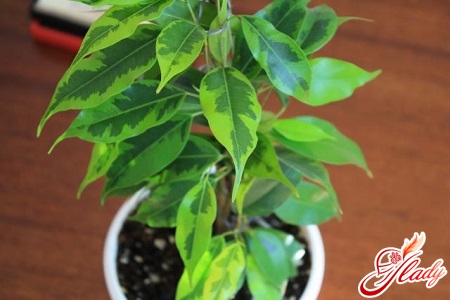
Reproduction of the Benjamin Ficus
The period of active ficus growth is excellentin order to multiply it. The main way of reproduction is cuttings. Do not try to root the young tops, choose those twigs, where the fabric is already quite stiff. Cut the stem size of 7 to 10 cm and be sure to remove the secreted milky juice. You can just put the cuttings in a container of water immediately, and after a while, change it. This procedure should be repeated within a day every three hours. When the juice has already been disposed of, leave the cuttings in a jar of clean water until the roots appear. Usually it takes about two weeks before the appearance of small roots, after which the cuttings are ready for rooting in the soil. When you put the cuttings into the water, it is very important to cut off all the lower leaves so that they do not decompose in a humid environment. For planting cuttings, pots with a diameter of 10 cm and any universal primer are suitable. Do not forget about the drainage, the layer of expanded clay must be sure. The planting of young plants differs little from the further transplantation, of which we have already written.
Problems in caring for Benjamin ficus
Foliage is the main indicator of plant health. The most frequent problems that affect such indoor flowers are described below.
- The leaves fall off and the tips dry: the cause is too dry air in the room. Solves by spraying;
- The leaves of the plant twist and wilt: this indicates a lack of heat for the ficus. If it is near a wall or glass, move it aside. Increase the temperature in the room as a whole;
- New shoots, thinned and too small leaves: lack of light or nutrition. Feed the plant and put it on a more lit area;
- The lower leaves fly around: this is not a problem, but the natural result of plant growth;
- Do not forget to periodically inspect the plant for pests. Ficus leaves adore cobwebs and shield aphids. Destroy them with ready-made insecticides.
That's all the basic rules for caring for the ficus inhome conditions. Do not be afraid to shape his crown and regularly cut off excess shoots, the plant will only benefit from this. Do not take it out on the balcony in January and do not put it on drafts, then it will decorate your apartment for a very long time!






